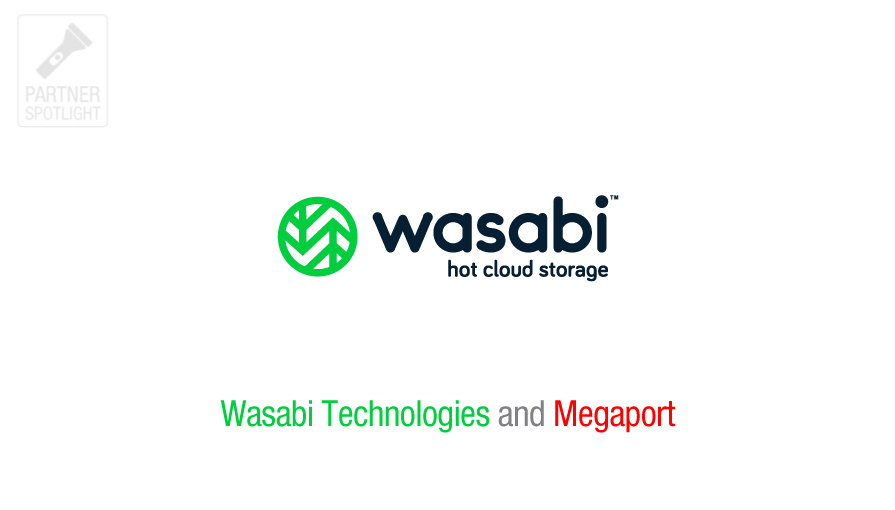
Is Your Internet Connection Damaging Your Business?
- Cloud networking
- July 6, 2022
- RSS Feed
Choosing the right cloud connectivity method could make or break your business. So should you avoid using the internet, or does it have a place in your cloud network?
Cloud-based services are essential for many businesses, offering employees a virtual office and the flexibility to connect from anywhere, at any time.
But as digital interconnectivity use cases grow, the question becomes less about why cloud-based solutions should be incorporated into your business, and more about which type of cloud-based connectivity you should use.
Public cloud networks and connectivity methods—namely, the public internet—serve as one of the most popular and easy ways to connect to your business workloads, and as such, many businesses flock to them. But are they necessarily the right option for your enterprise?
Public vs private networks
First, let’s look at exactly how public and private connectivity differ from each other. A private cloud network is exactly how it sounds – private, and not shared with any other organization.
All computing resources and connectivity methods to their private cloud services are delivered via a secure private network and dedicated for use to a single business.
Larger organizations may architect and use their own network, data center racks and all; but for most businesses, leveraging an existing private network layer through a Network as a Service (NaaS) provider serves as a far more flexible and affordable option.
On the flip side, a public cloud network includes the use of cloud platforms and connectivity methods which relies on the public internet; in other words, shared amongst different customers or businesses. While data and applications are hidden from other customers, they aren’t protected.
At first glance, public cloud networks seem cost-efficient and easy to provision. However, there are several reasons you should be wary of solely relying on the public internet to underpin your business connectivity.
Drawbacks of the public internet
Compromised Security
One of the biggest concerns that businesses have when it comes to the cloud is security. The cloud is generally secure – in fact, its entire existence depends on ensuring a secure environment.
However, that doesn’t stop hackers and cybercriminals from infiltrating public clouds and connectivity paths much more easily than they can private connections.
In a cloud-native business landscape, cloud platforms handle a great deal of personal and financial information. But when that data has to traverse public networks, it needs to take more Autonomous System (AS) paths, leaving it exposed for longer – and with no end-to-end encryption or Firewall as a Service (FWaaS) capabilities baked in, you have to put the safety of your data down to chance.
Keep in mind, if a breach results in any customer-facing issues, it’s your brand that must deal with the consequences, not your cloud providers.
Integrating your network can be the key to dodging cyberattacks – learn how to do it here.
Higher Costs
It is common belief that the overall selling point of the public cloud is that it’s more cost-effective – but that isn’t necessarily the case. Initially, a public cloud solution might very well be cost-effective, but these costs can quickly spiral out of control.
For one, most cloud providers charge higher egress fees to move data over the public internet than they do over a private network layer. Plus, with poor redundancy and disaster recovery, the frequent downtime public network users experience can lead to huge losses – according to Gartner, a massive $5,600 per minute.
This number only grows when you factor in the impaired productivity experienced from traffic bottlenecks and downtime. Scale that number over a large business across several months, and you’re looking at eye-watering costs.
While the public cloud works well for instant access without upfront capital costs, businesses must consider whether implementing their own equipment and looking at alternative cloud-based solutions would be a more cost-effective option.
Poor Performance
Think about the last time Facebook was down and you couldn’t refresh your newsfeed – annoying, right? Whenever popular websites like Facebook or Netflix experience server issues, the uproar can be overwhelming –and the reputation of those vendors is called into question.
Having a performant cloud network is key to preventing these disasters for your business and your customers – something the public internet can’t guarantee.
Maintaining a public cloud network places a high reliance on your internet service to handle the workload – but the truth is that public internet connections do not offer the same reliability as private connections.
With a huge number of users sharing public paths, periods of peak demand leave users scrambling for bandwidth, slowing latency to a crawl and all but halting operations. And when there are redundancy incidents, which happen more frequently than you may think, operations will cease completely and indefinitely. With the unpredictability of the internet, these incidents can happen when you least expect it.
When your company is running critical applications in the cloud and your connection suffers, every second counts. Not only can it cost your business huge sums of money, it also leads to lost productivity, lost business, and even long-term damage to your business’ reputation.
Overall, flexibility and control are essential to ensure that services can be accessed reliably and consistently, by both your teams and your end users.
When to use public internet
Public internet can, however, still be desirable and suitable for some use cases. When used as part of a software-defined wide area network (SD-WAN) network for edge connectivity, for example, which aggregates internet connections across distributed edge locations into a secure end-to-end architecture.
The internet can also provide an affordable and easy solution for businesses performing low-risk activities, such as sending emails or other operations that don’t place confidential or critical data at risk.
Public internet can also be a preferred tool for migrating small, one-off workloads in single regions between clouds, although it is recommended that a VPN is used as a security buffer. So, while public internet alone is not recommended, when used alongside a private solution (or when public cloud is used in combination with private cloud for a best of both worlds solution), it’s a good option for businesses looking to quickly and easily perform basic network functions, or build the foundations or a more sophisticated setup.
How to go private
By now, you may have decided that the threats of using a public cloud network for your business seem to outweigh the benefits.
So what is the best alternative?
We’ve written many blogs on private connectivity methods, from the different ways you can build a private network to the different private connectivity solutions offered by major CSPs. But the one solution that can underpin almost any private setup—and that’s easiest to get started with—is Network As A Service (NaaS).
NaaS is a private cloud network layer that enables users to operate a network without having to own, build, or maintain any infrastructure – and without using the public internet.
Essentially, businesses “rent” a private network path to (and sometimes between) cloud providers from a vendor-agnostic provider, which removes the burden of having to build a network infrastructure from the ground up.
Instead, you can focus on achieving business outcomes and growing revenue, while you allow experienced network professionals to provide resources, security services, appliances, products, and more.
In the NaaS structure – which we explain further in our blog – vendors take care of all network functions, meaning that companies can set up their own networks without hardware – all they need is internet connectivity to jump on to the NaaS fabric.
This not only eliminates hardware costs, but also gives users the flexibility to scale up or down as demand changes, along with the ease of rapidly deploying services.
NaaS vs public cloud
Think of an unsupported public connectivity method as a public road. You don’t have any protection or privacy, so you can be targeted in road rage incidents. You’re sharing the road with many other cars, so peak hour often leads to traffic fluctuations or delays. You also pay a set toll to use the road, while nothing about it can be changed or customized by you.
Now think of NaaS as a private road, built just for you. No other cars can share the road with you, meaning there are no road rage incidents; in other words, you’re protected and secure. You won’t be delayed by traffic jams, meaning great reliability and performance. Plus, you can change the size of the road depending on how many cars you want to send down the road, ensuring scalability.
And if you want to grow your network or connect different roads to each other, you can build more roads on demand, giving you the flexibility to easily grow over time alongside your business’ changing priorities and needs.
With this analogy in mind, it’s easy to see why NaaS is not only a great option for businesses because of its ease of use, but because of its security benefits, its reliability, and the fact that it is highly scalable.
The verdict
Overall, the cloud option that is optimal for your enterprise is highly dependent on your business’ needs. Whether you’re a single office start-up with five employees or operate internationally as a team of 500, factors such as security, performance, ease of use, cost, and scalability should all be considered when determining what suits your business the most.
Whether it be a public internet setup that’s used in conjunction with a layer of private connectivity for added security, or a purely private connectivity method like NaaS, having a secure internet connection is key to ensuring your business stays afloat and doesn’t fall victim to cybercrime or a damaged reputation.
Find out how Megaport’s NaaS can get you started on the path to a fast and secure network by booking a demo.


